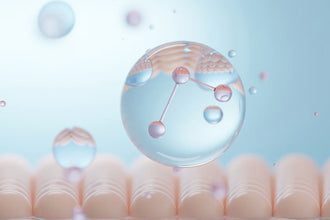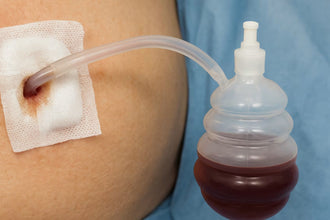
Scar Creams: Effect on Surgical Scars, Acne, and Stretch Marks
Scars are part of the human body's natural healing process. They vary greatly in appearance. Their principal medications, mainly scar creams, contain a mix of active ingredients that facilitate healing or improve the appearance of scars by promoting skin hydration, softening, and regeneration.
This article seeks to foster better understanding of the scar types, the choice and application of the appropriate scar creams and the overall treatment regimen for improved outcomes in management of surgical scars, acne scars and stretch marks.
Scar Types and Their Characteristics
| Scar Type | Cause | Characteristics | Common Locations |
|---|---|---|---|
| Surgical Scars | Incisions from medical procedures | - Linear and well-defined - Initially red, pink, or purple, fading over time - May be raised, flat, or indented - Prone to hypertrophy or keloid formation in some individuals |
Areas of surgical procedures |
| Acne Scars | Inflammation and skin's healing response after acne lesions | - Uneven and irregular shape - Types include icepick, rolling, or boxcar scars - May appear as dark spots (hyperpigmentation) - Can be raised in hypertrophic or keloid scarring |
Face, back, chest |
| Stretch Marks | Skin stretching beyond elastic capacity due to weight gain, pregnancy, puberty | - Irregular lines that can be red, purple, or silver - May be slightly raised or indented - Vary in width and length - Some fade over time |
Abdomen, thighs, buttocks, breasts, arms |
Different types of scars require specific treatment approaches based on their distinct characteristics and causes.
Surgical Scars
Incisions made during medical procedures leave surgical scars. These can be as mild as thin, fine lines, more prominent hypertrophic scars or even keloids, depending on the individual's healing process. Surgical scars normally undergo a maturation process, which may take up to a year, during which the scar changes in appearance.

Characteristics of Surgical Scars:
- Linear and well-defined.
- Initially red, pink, or purple in color, gradually fading to a lighter tone.
- Slightly raised, flat, or indented, depending on healing and collagen formation.
- Prone to hypertrophy or forming keloids in certain individuals.
Acne Scars
Such scars are a common concern especially for people who experience severe or cystic acne. Unlike surgical scars, acne scars are often formed due to inflammation and the skin's attempt to heal itself after significant damage from acne lesions. The many acne scar types include atrophic (depressed), hypertrophic (raised), or post-inflammatory hyperpigmentation.
Characteristics of Acne Scars:
- Often slightly uneven and irregular in shape.
- Can appear as pitted (icepick type), rolling or boxcar scars.
- May also appear as dark spots on skin (hyperpigmentation) that can last for months.
- May be raised, particularly in hypertrophic or keloid scarring.
Stretch Marks
Stretch marks appear when the skin is stretched beyond its elastic capacity, such as during rapid weight gain, pregnancy, or puberty. Unlike surgical and acne scars, stretch marks are not caused by trauma but rather by stress on the skin which causes stretching and tearing at the dermis level. This causes largely linear scars that can vary in color and may also be slightly raised or depressed.
Characteristics of Stretch Marks
- Appear like slightly irregular lines on the skin that can be red, purple, or silver.
- Generally occur on the abdomen, thighs, buttocks, breasts, and arms.
- May feel slightly raised or indented, depending on skin type, location and healing.
- Vary in width and length, with some fading over time.
What’s in a Scar Cream?

Most scar creams contain a number of active ingredients useful for skin healing, hydration and collagen management. Understanding these ingredients helps choose the most appropriate cream for the various types of scars.
-
Silicone: It is one of the most popular and researched ingredients for treating scars. It aids skin hydration, decreases formation of collagen fibers, and suppresses redness and itching. Some of the most effective scar-care products are silicone-based creams or gel. These are especially effective for surgical and hypertrophic scars.
-
Allantoin: As a very gentle ingredient, allantoin is great for moisturizing and soothing the scar-affected skin tissue, making it suitable for all kinds of scars, especially for individuals with sensitive skin.
-
Vitamin C: It is an antioxidant with properties that lighten the skin and decrease pigmentation. Vitamin C is beneficial for hyperpigmentation and acne scars, since it speeds up collagen production and lightens the skin’s discoloration.
-
Hyaluronic Acid: Being an excellent moisturizer, this ingredient is very effective in the management of dry skin. By replenishing the skin’s water content, hyaluronic acid ensures that scar tissue remains supple, facilitating effective healing.
-
Retinoids: Included in many creams meant for scarred skin or pregnancy stretch marks, retinoids enhance skin renewal and collagen formation. They assist in bleaching dark spots and smooth uneven skin texture over time.
| Ingredient | Benefits | Suitable for |
|---|---|---|
| Silicone | Aids skin hydration, decreases collagen fiber formation, suppresses redness and itching | Surgical scars, hypertrophic scars |
| Allantoin | Moisturizes and soothes scar-affected skin tissue; suitable for sensitive skin | All types of scars |
| Vitamin C | Antioxidant properties; lightens skin discoloration; decreases pigmentation; speeds up collagen production | Acne scars, hyperpigmentation |
| Hyaluronic Acid | Excellent moisturizer; replenishes skin's water content; keeps scar tissue supple | Dry skin, all scar types |
| Retinoids | Enhance skin renewal and collagen formation; bleach dark spots; smooth uneven skin texture over time | Stretch marks, acne scars |
Useful Ingredients for Each Scar Types
Comprehending both the scar type and the active ingredients that work best for that type of scar is crucial. Here is a structured guide:
Surgical Scars
Silicone-based creams or gels are widely accepted to be the best for recent surgical scars. These protect the skin, help with hydration and regulate collagen synthesis – all of which are important for reducing hypertrophic or raised scarring. Combining silicone treatments with ingredients like Vitamin C can also aid in reducing redness and improve overall scar appearance.
Acne Scars
Apart from silicone, retinoids, Vitamin C, and hyaluronic acid are often the most effective for treating acne scars such as icepick, boxcar, and rolling scars. Retinoids are useful in enhancing the skin texture and stimulating collagen synthesis. Vitamin C helps lighten the darkening skin. Hyaluronic acid is excellent for maintaining skin hydration, to help the skin heal.
Stretch Marks
Treating stretch marks can be more challenging due to the dermal tearing involved. While silicone remains the proven and time-tested treatment, hyaluronic acid and retinoids may once again be beneficial. Hyaluronic acid helps retain moisture in the skin, while retinoids promote cell turnover and reduces the depth of stretch marks over time.
Advice for Using Scar Creams
Scar creams’ effectiveness depends not just on their active ingredients but also their consistent and proper use. Whether the scar being treated is surgical, acne, or stretch marks, following the best practices for application maximizes the benefits and accelerates healing.
General Tips for Using Scar Creams Effectively
-
Clean and Dry Skin: Before using any scar cream, cleaning and drying the affected area is recommended. Dirty or oily skin, and even skin moisture alone, can interfere with the absorption of the active ingredients in the cream.
-
A Thin, Even Layer: Gentle application of a small amount of the cream to the scarred area is advisable. Rubbing the cream too vigorously can cause irritation or further harm the scarred tissue.
-
Gentle Massage: Some types of scars such as hypertrophic or keloid scars should be massaged with the cream in a gentle, circular motion to help break down the excess collagen and improve blood circulation, which can speed up healing.
-
Recommended Frequency: Most scar creams need to be applied once or twice a day according to the instructions provided. Consistency is key for effective results.
-
Sun Exposure: Many scar creams, including those containing retinoids or vitamin C, may make the skin more sensitive to sunlight. Sunscreen offering broad-spectrum protection should be used to avoid further discoloration.
-
Hydration and Healthy Diet: Proper nutrition, including enough vitamins, minerals and water intake, keep the skin healthy and helps repair scarred skin. Foods with antioxidant properties and omega-3 fatty acid, which fight inflammation, are known to be beneficial.
Advanced Strategies to Manage Different Types of Scars with Scar Creams
Beyond general tips, some advanced strategies for specific scar types can help maximize results.
1. Surgical Scars: Combining Scar Creams and Other Treatments
Scar treatment is often a multi-faceted approach, especially for relatively large scars or those on exposed body parts. Applying scar creams in combination with other treatments is usually beneficial.
-
Microneedling or Laser Therapy: At times, combining scar gels with other procedures such as derma-rolling or laser therapy can increase the delivery of the ingredients to the deeper layers of the skin and promote quicker healing. However, such procedures should only be considered upon a dermatologist’s advice.
-
Compression Garments: For scars on high-mobility areas of the body, it is advisable to use compression garments in conjunction with the application of the scar creams as uniform pressure and limited movement prevent hypertrophic scar formation.
2. Acne Scars: Layering Products for Targeted Treatment

Treating acne scars usually requires a more targeted approach due to their location. Layering multiple products at once can enhance the benefits of each and tackle different scar characteristics.
-
Layering Retinoids and Hyaluronic Acid: Use a retinoid-based scar cream to increase cell turnover and regulate collagen, followed by a hyaluronic acid serum to lock in moisture and soothe the skin.
-
Using Vitamin C Serums: In the morning, use a Vitamin C serum to treat pigmentation and brighten the skin, then follow up with a scar cream that also hydrates and protects the skin.
-
Spot Treatments: For specific acne scars, such as icepick scars, it is advisable to use a concentrated scar cream for spot treatment together with the daily skin-care regimen. This targeted approach enables the active ingredients to work more intensively on problem areas.
3. Stretch Marks: Enhancing Skin Elasticity and Tone
Since stretch marks are formed at dermal level, they need regular management to prevent them from aggravating.
-
Start Early: It is advisable to begin using scar creams at the initial stage of appearance of stretch marks. At this stage, the skin is more sensitive and more conducive to treatment.
-
Combine with Moisturizing Creams: Stretch marks can benefit from scar creams that contain hydrating ingredients like hyaluronic acid. Combining these with deep-moisturizing creams, such as those containing shea butter or cocoa butter, can improve skin elasticity and reduce the appearance of stretch marks.
-
Regular Exfoliation: Mild scrubbing helps remove dead skin cells and allows better absorption of scar creams. Exfoliate gently on the affected area, but do so no more than 2-3 times a week to avoid irritation, particularly on sensitive skin.
Monitoring Progress and Adjusting Treatment Plans
Managing scars is a process, a long-term one, that requires patience and consistent care. Regular monitoring and adjusting of treatment plans are necessary to achieve the best possible outcomes.
Key Steps to Monitor and Adjust Treatment
-
Track Changes Over Time: Document changes in scar appearance by taking regular photographs under the same lighting conditions. This helps to objectively measure progress and adjust the treatment plan accordingly.
-
Consult a Dermatologist: Periodic consultations with a dermatologist or skin-care specialist can provide valuable insights into how well a scar is responding to treatment. Experts may suggest modifications or additional treatment to enhance results.
-
Stay Updated on New Developments: Advances in scar-treatment, from topical innovations to non-invasive procedures, continue to emerge. Staying informed about these options can help take the right course and optimize scar management strategies.
Conclusion
Understanding the scar type and choosing the right scar cream can make a significant difference in scar management outcomes. With surgical scars, acne scars or stretch marks, a combination of treatments, appropriate products and methods give better results leading to the scars being less visible and less irritable.
Regular application together with complementary treatments and skincare best practices ensure the scars heal at the earliest. As with all health-related matters, consulting a healthcare professional or dermatologist prior to deciding on scar treatment to your specific needs is safest and ensures optimal results.
References:
https://www.ncbi.nlm.nih.gov/pmc/articles/PMC3996787/
https://www.ncbi.nlm.nih.gov/pmc/articles/PMC5749614/
https://www.ncbi.nlm.nih.gov/books/NBK436005/
https://www.ncbi.nlm.nih.gov/pmc/articles/PMC7310548/
https://www.ncbi.nlm.nih.gov/pmc/articles/PMC2918339/
https://www.ncbi.nlm.nih.gov/pmc/articles/PMC6791161/
https://www.ncbi.nlm.nih.gov/pmc/articles/PMC6991940/
https://www.ncbi.nlm.nih.gov/pmc/articles/PMC7802860/
General Disclaimer: All information here is for educational purposes only and is not meant to cure, heal, diagnose nor treat. This information must not be used as a replacement for medical advice, nor can the writer take any responsibility for anyone using the information instead of consulting a healthcare professional. All serious disease needs a physician.















